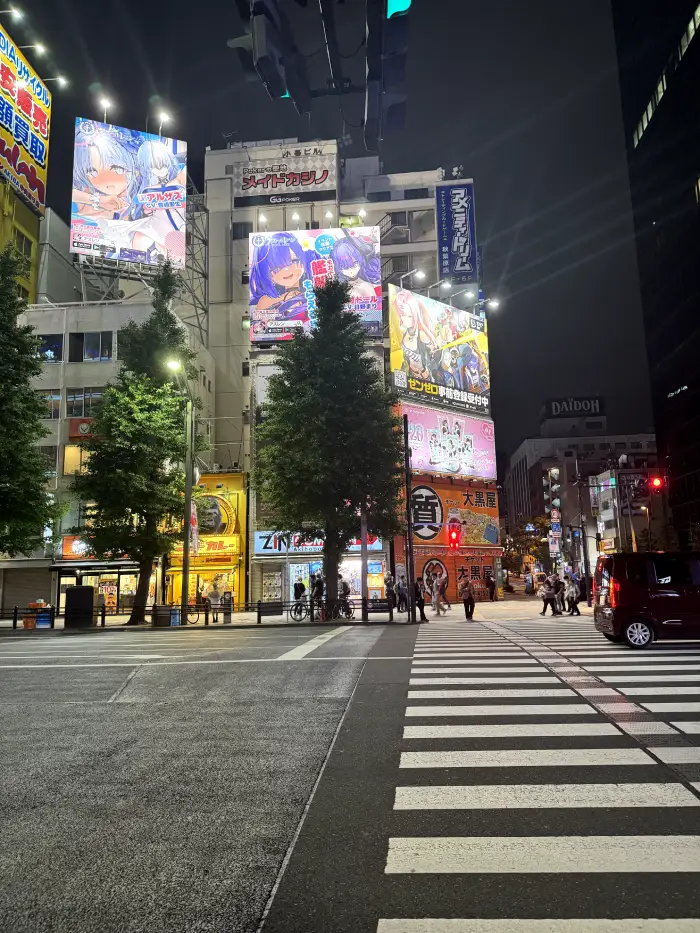Agra is a city, which houses one of the wonders from Seven Wonders of the World. It is probably one of the touristy Indian towns of all! And my recent trip to Agra made me realize how sacred and spiritual it truly is than what we have read in the books. Agra is a small city in Uttar Pradesh but has the highest number of tourists visiting every day. The main lifeline of people in Agra relies on tourism, handicrafts, and agriculture. Needless to say, the Taj Mahal is everything!
Agra is part of India’s golden triangle with Delhi and Jaipur, and it is on the bucket list of every solo adventurer. Your itinerary is incomplete if you do not visit the Taj Mahal. I realised that India has such a rich history and heritage, but often it gets blindsided due to its emerging businesses.
Don’t miss reading 20 Tips to Remember While Travelling Solo as a Woman in India.
About Taj Mahal
Often referred to as the symbol of love, Taj Mahal stands as a testimony of strength and devotion. Ruler Shah Jahan spent nearly 32 million rupees constructing the Taj Mahal and imported precious and semi-precious stones from China, Sri Lanka, and Tibet. Since the transportation relied on traditional methods during the mid-1600, elephants and camels were made to carry the materials to India. How cool is that!? I can visualize it all!
You will be surprised to know that the Taj Mahal minarets are not perpendicular to each other, but instead intentionally tilted outwards. If ever the marble pillars collapse due to their weight or natural calamity, the main structure of Mahal will not be affected and disrupted.
Also, have you known any structure standing on the river to be healthy? Eventually, they get moist, and the wood starts to drift apart but not in this case. As the Taj Mahal adorns the river Yamuna, tonnes of thick layers of timber wood form its entire foundation. Due to the property of this wood, the moister it gets, the more robust it remains.
Architecture and Interior Design
Situated in Delhi, Qutub Minar is the tallest brick minaret in the world, but the Taj Mahal exceeds its height and is five feet taller. Mughals heavily influence the architecture and design of the Taj Mahal, as you can see a variety of tombs, arches, and high ceilings here. The intricacy in this work is praiseworthy and will leave you in awe! There is a blend of Persian, Islamic, and Indian architecture in this magnificent beauty.
Makrana in Rajasthan gave away a massive volume of translucent white marble for the Taj Mahal’s construction. Stonework and stone carvings are the prevalent occupation in Rajasthan. This tomb contains 99 different names of Allah inscribed inside the giant Mahal.
The calligraphy done inside the Taj Mahal walls is borrowed from the holy book – Quran, and its verses are all over Shah Jahan and Mumtaz’s tombs. Taj Mahal became one of the Seven Wonders in the World in 2007 with more than 100 million votes worldwide. Does it not make you curious to see this?
Historical facts
Taj Mahal was first supposed to be constructed at Burhanpur in Madhya Pradesh, where Shah Jahan’s wife Mumtaz died while giving birth to their child. But due to obstacles in transportation and inefficiency in the supply of marble, the construction happened in Agra! Today, Agra stands as one of India’s popular cities having the maximum number of tourists visiting daily.
Shah Jahan’s and Mumtaz’s plain coffins are inside the inner chamber of the Mahal. As per Islamic traditions, they don’t decorate the graves.
Initially, the daffodils and roses surround the Taj Mahal’s circumference. But when the British empire took over at the end of the 19th century, they replaced the gardening style and choice of flowers with their English taste, and to date, it remains in the same manner.
Being North India, you can further plan to visit other historical monuments and heritage sites. For this, read my guide – The Ultimate Travel Guide To North India.
Getting to Agra
Travelling in this magnificent city is the least of the issue as several local options are very convenient. You can use a three-wheeled auto-rickshaw or book a Meeru cab for ease. I will suggest you reach Delhi by flight and take a taxi from the airport to reach Agra. It is a three-hour journey covering a distance of 200 km through Yamuna Express Way. It is the most hassle-free and comfortable way to get there.
Ideally, I will suggest you stay there overnight and leave after witnessing spectacular sunrise from Taj Mahal’s tombs. Also, the option of reaching by bus and train is available.
Best time to visit
I will personally recommend you to visit in the summer from March to August so that you can see different shades of the Taj Mahal throughout the day. From the morning light reflecting on the white marble to how it slowly changes its colours to mild or brown by evening and golden under the moonlight, it is a delight to watch. On Fridays, it remains closed as there is a mosque inside, and Muslims have their Friday praying every week.
Get your Instagram posts from Taj Mahal and by the background of Yamuna river. I will personally suggest you wear some solid bright colours as the entire background at Taj Mahal is in a whitish tone. It makes your outfit stand out in the picture.
Places to stay
There are several five-star properties, which gives you a complete view of the river Yamuna and Taj Mahal. You can look for ITC Mughal, Holiday Inn, Trident, and Hotel Clarks. The staffs of these hotels are very courteous and resourceful. Ensure that you pre-book your accommodation. The best time to visit the Taj Mahal is to beat the crowd and enjoy its beauty early in the morning.
Entrance Fee
Carrying your ID proofs or a passport is a must. For Indians, the fee is Rs 50, and for foreign travellers, it is Rs 1,100. It is open from 9 am to 7 pm, and there is no time limit. You can spend as much time as you want.
Did you know?
- Due to over pollution and industrial waste disposal in the Yamuna river and around Agra, the Taj Mahal’s white marble turned yellow from its sparkling white colour. A few years ago, the government banned all vehicles from being parked 500 meters away from the Taj Mahal. Now all the tourists and visitors have to walk from the parking area to reach there.
- There is a no-fly zone over the Taj Mahal as it is forbidden to fly an aircraft over here.
- During World War II entire Taj Mahal was covered with a black sheet at night so that it is not visible from the sky and enemies cannot bomb it. Taj Mahal is India’s pride, and there is always 24*7 high security to protect it from terrorist activities.
- The son Aurangzeb imprisoned Shah Jahan in Jasmine Tower of Agra, and later Taj Mahal was built at an angle from where Jasmine Tower is visible.
- More than 20,000 labourers were involved in Taj Mahal’s construction, and to date near to 6,000 workers are involved in its day-to-day maintenance. Woah!
- This tourist magnet has a 115 feet high ceiling at the white dome of the tomb. It is often called as Onion Tomb, too, due to its physical resemblance to the onion.
- In the late afternoon, the Taj Mahal’s shadow is reflected in the river Yamuna and is breathtakingly beautiful.
Souvenirs to buy
You are at the one-stop heaven of shopaholics. You will think twice before dropping anything. Most of the handcrafted work has such a high standard of material and quality that it is hard to resist not to buy.
- Taj Mahal’s miniature is the best gift to take back home as memory or even gift it to someone close to you. It is available in marble and crystal material.
- Agra is famous for sweets, especially Panchhi Petha; get a box of happiness packed before leaving the city.
- Handicrafts and skilled labourers are in high demand in Agra, and that is why you will find a variety of products to buy. I will recommend you look for a carpet or rug as they have Mughal designs woven. You can use them as a wall carpet, a floor carpet, or a behind your bedside.
- Agra is popularly known as the land of Mughals. You can buy handicrafts carved from marble, such as flowerpot, elephants, statues, cutlery, and centerpieces.
- Jewellery is another attraction for many. Made from precious stones, a wide variety of jewellery and accessories is available. You can look from rings to bangles, from necklaces to earrings. You name it, and you will get it here.
- Visit Sadar Bazaar and Kinari Bazaar to get the best leather products. You will find the fair and genuine quality of leather that lasts long. I will suggest buying tote bags, diaries, shoes, and jackets.
Things to remember
- There is no food-joint inside, so ensure that you have a good meal before stepping in and carry water bottles.
- You can carry mobiles inside, but you have to get a separate chargeable token issued for photography purposes to take DSLR or Tripods.
- There is no strict dress code, but it is better that you wear something that does not expose a lot of skin. Please wear jeans and a top or long flowy dresses and skirts (totally Instagram worthy).
- There is no deity or idol or worship inside, so you do not have to carry any offerings.
- Due to a large crowd, petty thefts are common, so make sure you are very particular with your belongings and wallets.
- Carry your sunglasses, sunscreen, and a hat as it gets quite hot during the daytime despite marble keeping it cool.
- While you enter, you can opt for a virtual guide in the language of your preference, and they will provide you with a handy translator and earphones that narrate the history and significance of the Taj Mahal. Honestly, they’re much better than local tour guides who’d literally burn holes in your pocket. The key is to haggle, haggle, HAGGLE!
Living up to its name and fame, Taj Mahal stands for sacrifice, devotion, and love. It is not just a physical structure. Instead, it further goes down in your skin and makes you wonder about a human’s characteristics. My trip to Taj Mahal in Agra was satisfying and productive. I hope you all take this leap of faith, too, and plan your solo trip to Agra. To know more about Agra, read The Ultimate Guide to the Taj Mahal in India.








Leave a Reply